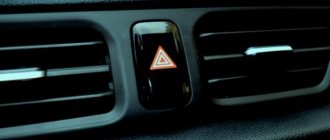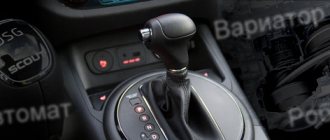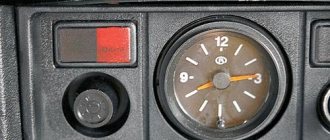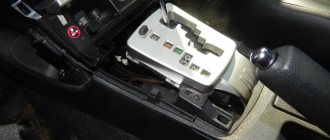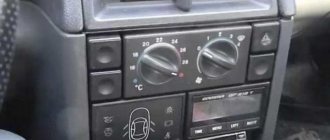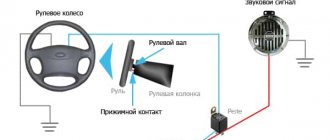Automatic transmissions provide smooth gear shifting, but when malfunctions occur, shocks and shocks appear, reducing the level of comfort. The owner needs to find out why the automatic transmission is kicking, since with further operation the unit will go into emergency mode or stop transmitting torque from the motor to the wheels.
In what cases can the box kick?
The main causes of automatic transmission malfunction, causing shock shifting of stages:
- overheating of the working fluid, causing a drop in pressure in the circuits of the box;
- destruction of the friction coating due to slipping and subsequent overheating;
- drop in oil level due to leakage through seals or damaged gasket;
- failure of the electronic controller, breakage of wiring harnesses or oxidation of the connector;
- foreign particles entering the channels and valves of the hydraulic unit;
- breakdown of the actuators responsible for the physical selection of the gear in the automatic transmission.
High temperature and low valve pressure
The boxes use a special ATF fluid as a working substance, which degrades during operation and is gradually saturated with finely dispersed wear products. Some of the contaminants are caught by a filter and a magnetic insert located in the automatic transmission housing. Due to the drop in performance, the oil becomes excessively fluid when heated slightly, which causes shock gear shifting. Deposits impair the operation of the transmission heat exchanger, which negatively affects the cooling conditions of the working fluid.
Manufacturers indicate the frequency of changing the oil in an automatic transmission every 50-60 thousand kilometers. If the car is driven in dense city traffic jams, then maintenance should be performed after 35-40 thousand km. In addition to draining the fluid, you should install a new filter and make sure there is no oil leakage through the seals or gaskets. The service life of the automatic transmission depends on the quality of service, which can exceed 300 thousand km.
Melting of friction discs due to high temperature
Clutch packs are used to change gears; during operation, the parts wear out, which leads to an increase in clearances. Slipping of the elements leads to increased temperatures and additional wear on the couplings. Small particles enter the oil and penetrate the hydraulic unit, causing incorrect gear shifting. The working fluid gradually darkens, and due to foreign impurities, the oil emits a burning smell. It is necessary to carry out diagnostics, install new friction packs, clean the box of dirt and fill with fresh ATF.
There have been cases where installing the original package does not lead to normal operation of the box. The reason is worn out drums (for example, this problem is often found on Audis with 6-speed automatic transmissions manufactured by ZF). Liquid leakage through the drum bushings leads to weak contact of the clutch clutches, which begin to slip and overheat. After some time, the car owner again experiences impacts when shifting or transmission failure.
Some boxes use band brakes that are pressed against a cylindrical drum. When scoring occurs on the working surfaces, shock shifting of speeds is possible. On automatic transmissions of Mazda 6 cars assembled before 2009, destruction of the mounting hole for the band brake rod is noted. A drop in fluid pressure leads to rough gear shifting; many owners of used cars complain of problems when switching from 3rd to 4th gear (regardless of the intensity of acceleration).
Insufficient fluid level in transmission
Leakage of some of the fluid or incorrect filling of the box leads to errors in the operation of the hydraulic circuit. Oil may leak through damaged seals, heat exchanger tubes, damaged gaskets, or through caps that are loose. Under normal operating conditions, the automatic transmission housing must remain dry and no oil leaks are allowed. To restore functionality, it is necessary to bring the fluid level to normal while eliminating the causes of the leak.
Malfunctions in the electrical unit
The automatic transmission control unit is installed as a separate module or integrated into the engine controller. Electronic components are located in the engine compartment or inside the vehicle (depending on the model and manufacturer). The unit sends erroneous signals, leading to incorrect speed switching. The problem may arise due to damage to the connecting harnesses or water containing road reagents entering the connectors. The malfunction is determined using a scanner that reads and decrypts error codes from the controllers’ memory.
Occasionally, the cause of incorrect operation is the software installed in the unit. For example, some owners strive to improve the dynamic characteristics of their cars and download upgraded firmware. If the program is selected incorrectly, the box operates with errors or goes into emergency mode. Impacts can also occur when installing a block from another car (same model, but different year of manufacture). The cause of the failure is the incompatibility of the firmware version with the operating algorithms of the gearbox or engine.
Valve block clogged
The hydraulic unit is located at the bottom of the box. Inside there are channels for supplying working fluid to the solenoids; trapped wear products reduce the pressure in the hydraulic circuit, leading to prolonged or shock switching. On boxes with a mileage of more than 200 thousand km, the geometry of the mounting sockets for solenoids may be violated. Due to the development, cracks are formed through which some of the liquid escapes. Wear accelerates sharply if there are metal shavings and friction disc particles in the oil.
Wires and solenoids
Failure of the hydraulic unit solenoids is one of the common causes of jerking when shifting gears both up and down. The drives cannot be repaired; if a defect is detected, a new element must be installed. For example, on French automatic transmissions of the DP series, the control valve often fails, which blocks the operation of the solenoid. If contaminated with wear products, you can try to wash the devices, but the procedure does not always allow you to restore the initial characteristics.
Some automatic transmissions use a mechatronics unit, consisting of actuators and an electronic module. If it breaks down, there are problems with shifting; the box may stick in one gear or shift up or down with a sharp jolt. Mercedes-Benz uses similar units on 7-speed gearboxes 722.9.
Mechatronics malfunctions can be detected with a scanner; decoding error codes will allow you to understand the cause of failures during automatic transmission operation.
Some reasons for kicks in the variator. What is normal and what is time for repairs.
IN
In this article I will talk about such a rather uncharacteristic thing for CVTs - these are kicks. We all know that CVT gearboxes don’t have any parts that, let’s say, have a hard hook, we have a belt that runs along a cone and kicks - this is a big enough reason to think about deciding to go to a service center to do diagnostics.
And here there will be 3 points because of which you might think that your box is broken. And we will try to figure out each of these points - whether they are a breakdown or whether this is the normal normal operating mode of the CVT gearbox.
All three points will go in increasing order from the very ones that I think everyone knows and to the last point, which gathers quite a large number of discussions on the forums.
- Kicks in static (Kicks when switching PRND)
- Jerks (jokes) when picking up speed (acceleration)
- Kicks when braking
Point number one.
Many people ask “why is it that when I’m parked or in neutral, then I turn on drive or shift from drive to reverse, the car is accompanied by such a small push or kick. The fact is that, I’ll say right away that this is the story: when you change gears in a static state, the car pushes forward or backward in a moderate natural amount, then this situation is the norm (It’s a slight push, not a jerk).
The fact is that on CVT cars, in order to engage the reverse or forward gear of the automatic transmission, you need to compress or release one or the other clutch pack, and when this clutch pack is compressed or released, in order to compress it accordingly, you need to create a certain pressure in the box. Accordingly, this push is precisely connected with the fact that the automation builds up pressure, the clutches are compressed, and due to the fact that the engine and gearbox are located on such cushions as they are called, or engine or automatic transmission supports, because of this, the engine tilts the box a little bit . It is because of this that such kicks appear in static conditions and I will not delve into any technical details, I will try to tell everything in a simple enough language and understandable so that any person who bought such a car will come in, look and understand absolutely everything.
I also want to note that these three points apply only to cars with CVT gearboxes equipped with a torque converter.
Second point
He probably doesn’t even refer to kicks anymore, but to such jerks, I’ll explain. Let’s imagine a situation where, let’s say, you start driving, press the gas, rev the engine up to 5000 rpm, or go to overtake, and then you press the gas and the car itself accelerates and then suddenly you notice that the tachometer needle begins to jump up sharply, or, on the contrary, stops such failures of thousands up to two revolutions and at this moment the car does not receive any acceleration. Naturally, this means you begin to understand that something most likely went wrong and this point is really a breakdown. The fact is that if somewhere you once slipped, overslipped, or very often like to tear off the wheel box, then over time the belt slips along the cones, along the surface of the cones, it develops some tracks.
The tracks have become quite deep and at the time when you accelerate, the cones converge, the belt is pushed outward from the center of these cones and when the belt passes this notch, which has already worn out, it lingers on it for a while, and the revolutions begin to jump because of this and the automatic transmission needs to apply more pressure to compress the cones in order to push out this belt so that you can accelerate further.
And unfortunately, this item is again a breakdown (you may need repair of a Mitsubishi variator - we have such a service on our website). Precisely for the reason that you won’t be driving on such roads for a long time; at some point you just turn on drive, the engine will spin up, but the car won’t move and the gearbox will go into emergency mode.
Point number three.
This point is related to kicks when braking, that is, you are driving at some constant speed and you see ahead, let’s say the red traffic light comes on and you press the brake, you begin to brake evenly, and many have noticed, especially owners of Nissan cars (We have a service for repairing Nissan CVTs) that when braking when the car has not yet reached zero speed (speed about ten twenty kilometers per hour). The car is accompanied by a certain push, after which the car begins to brake normally. I’ll say right away that this point is not a breakdown, even if you have this on your car, it’s the usual standard operation of a CVT gearbox on a torque converter, the whole point is that this kick is caused by only two factors.
The first factor is that when you apply the brakes, the torque converter comes out of lockup mode. That is, it is unlocked, thus the pump wheel is purely mechanically unhooked from the torque converter housing, because of this you feel a slight kick and after it is unblocked, an oncoming flow of liquid begins to flow from the pump wheel, which is why you see such a push small. This means that according to the tachometer needle, it twitches a little at this moment and is accompanied by a kick throughout this whole thing. Unlocking the torque converter also occurs in order to protect your gearbox and engine from some kind of shock loads. For example, the car’s automation may think that if the speed has dropped to about 0, then you can sharply press the gas and thus slightly damage the engine or gearbox, respectively, in order to dampen These oscillations of the torque converter come out of the locking mode. Plus, you can catch some kind of hole or something else, so the unlocked mode is turned on.
And the second factor that influences this is turning on the fuel supply. The fact is that when you brake, your foot is on the brake pedal and there is practically no fuel supply to the cylinder. And when the revolutions drop to about a thousand, the fuel supply turns on and because of this the arrow twitches a little.
Kicks while accelerating
Jerks when switching when accelerating a car occur in the following cases:
- The movement started on a cold box. Car manufacturers indicate the warm-up time for the automatic transmission in the operating instructions. The driver needs to start the engine and press for 3-4 minutes. After the fluid warms up, the box works fine.
- Dirt has entered the filter element, reducing throughput. The pump's performance is not sufficient to supply fluid at the required pressure to the actuators. An additional reason could be a clogged hydraulic unit.
If the problem is observed when engaging reverse gear, then you should check the condition of the hydraulic transformer and sensors responsible for the operation of the transmission. A breakdown can only be determined using a diagnostic scanner that reads and decodes errors.
The main reasons for “kicks” when shifting gears
Most often, this malfunction is associated with the condition of the oil in the gearbox:
- The oil needs to be changed. Over time, it becomes more viscous, and this negatively affects the functioning of the transmission and gearbox.
- The oil is not warm enough. In this case, the shocks cannot be considered a sign of a breakdown, but such situations should still not be allowed. Insufficiently heated oil is thicker and lubricates the gearbox components less well, which can lead to subsequent failures.
- Insufficient oil. In this case, you just need to top it up.
There are other reasons for this behavior of the car:
- The fuel filter is clogged. Sooner or later this inevitably happens, and the use of low-quality gasoline accelerates this process.
- The car is very old. There can be many reasons why a car may “kick” when changing gears, and many of them are related to the long life of the car. Therefore, such a malfunction can occur in any machine over time.
- Careless driving. Read more about this below.
Kicks during a sharp start and during a long movement
Problems arise due to the use of liquid that has lost its original characteristics and contamination of the filter. During sharp acceleration, the gearbox and clutch packs experience increased loads, but the hydraulic system does not ensure correct shifting. In addition to draining the old fluid and replacing the filter, you should conduct computer diagnostics to make sure the solenoids are working properly. Another cause of impact when starting to move suddenly is worn out engine or gearbox mounts.
Kicks when changing from one gear to another
The main causes of shocks when changing gears:
- Starting to drive at negative air temperatures without pre-warming. Thickened liquid does not provide fast and smooth switching; shocks will be observed when the box is operating.
- Using liquid contaminated with impurities. After draining the old oil and flushing the gearbox by partially changing the oil 2-3 times at intervals of 200-300 km, the performance of the automatic transmission is restored.
- When the fluid level drops below the permissible limit, there is not enough oil supplied to the hydraulic system for smooth shifting.
Slight jerks when shifting may occur during the first drives in a car that was previously driven by another driver. Automatic transmission controllers adapt to the driving style and take into account the degree of pressure on the gas pedal during acceleration or while driving. For example, if the driver was driving smoothly, and then suddenly changed his driving style (or another person got behind the wheel), then signals from the electronic unit may cause slight twitching. A similar situation arises when using low-quality fuel. As the controller adapts (after 100-150 km), the problem disappears.
Why does the automatic transmission kick: the main reasons
First of all, a hydromechanical automatic transmission is a rather complex unit. An automatic transmission uses a large number of devices and different mechanisms.
- It is important to understand that in an automatic transmission, in addition to the components themselves, the working fluid is ATF. Moreover, this fluid is not just an ordinary gear oil for lubricating parts, but also performs the function of controlling the operation of the entire box.
It is quite obvious that the proper operation of the machine directly depends on the level, quality, properties and condition of the ATF fluid. If the fluid is dirty, has lost its properties, etc., then the box will inevitably begin to push and kick while shifting gears.
Taking into account the fact that in a hydromechanical automatic machine the connection to the engine is realized through a torque converter (fluid coupling, gas turbine engine), it turns out that it is the working fluid that transmits torque.
At the same time, the ATF oil works under load, gets very hot, wear products from the gearbox itself accumulate in it, etc. As a result, the viscosity of the liquid changes (liquefaction occurs or ATP thickens). In any case, both in thick oil and in liquid oil, the gearbox will shift jerkily, push and kick.
Moreover, in practice, a change in the properties of the ATP liquid occurs already at 40-60 thousand km. mileage You also need to take into account that if the car is new or the gearbox has been repaired, after the break-in of the ATF unit is completed, it is better to change it (after 5-10 thousand).
Otherwise, often the unit is designed, on average, for 250-300 thousand km. mileage will fail by 150 thousand. At the same time, the first signs of an impending problem will appear in the form of pushes and jerks to 100-120 thousand.
- The next element that may cause shocks is the automatic transmission oil filter. The fact is that the main task of the filter in an automatic transmission is to catch dirt and chips that inevitably form during the operation of the vehicle. We also recommend reading an article about how a hydromechanical automatic transmission is designed and works. From this article you will learn about what an automatic transmission with a torque converter consists of, as well as what the operating principle of an automatic transmission of this type is.
Sooner or later, the filter becomes clogged, that is, ATF is pumped worse under conditions of reduced filter capacity. The result is that the oil pressure in the automatic transmission decreases. In this case, the operation of the friction discs is disrupted, as they do not have time to stop at a strictly specified moment. The clutches slip, and the driver feels this slipping in the form of a push when changing gears.
- If we continue to talk about clutches, they also burn out. In simple words, friction discs are elements that compress or decompress, respectively, stopping/releasing the necessary gear of a particular gear inside the automatic transmission.
If the oil pressure decreases, the clutches do not provide proper compression and begin to slip and wear out heavily. The heating increases due to slippage, the oil in the automatic transmission turns black, and a burning smell appears.
It is quite obvious that problems with the clutches mean that the gears do not stop and release at the correct time. This results in the transmission jerking or kicking when changing gears, and the driver feels bumps and jerks.
Please note that such a breakdown is serious, that is, changing the automatic transmission oil and filter will not solve the problem. In other words, the box needs to be removed, disassembled, troubleshooting carried out, and only then, as part of the repair, clutches and other worn elements must be replaced.
Overheating of ATF in the automatic transmission and low transmission fluid pressure
Let's start with the fact that many automatic transmissions (with the exception of some types of automatic transmissions on budget small cars) have an additional oil cooling radiator. This solution is necessary in order to lower the temperature of the working fluid and maintain its viscosity.
This solution, on the one hand, allows you to displace dirty oil and replace it with fresh liquid. However, the disadvantage of this replacement method is that the transmission pan is not removed, the pan is not washed and the magnets are not cleaned of chips, the automatic transmission filter is not replaced, etc.
As a result, the radiator is not washed, dirt and deposits from the pan get into the radiator, and the automatic transmission filter becomes even more clogged. Contaminants also get into the hydraulic unit (hydraulic plate), solenoids (valves) become clogged, etc.
It becomes clear that in this case, the liquid does not pass through the clogged filter in full, and overheating of the automatic transmission also occurs due to the low throughput of the thin channels of the oil cooler.
It turns out that such a replacement can only be made when the owner is firmly convinced that everything inside the box is clean. In practice, it is optimal to alternate hardware replacement with classic replacement, that is, removing the pan, cleaning, replacing the filter, etc.
- As for the drop in oil pressure in the automatic transmission, the cause may be not only contamination, but also problems with the automatic transmission oil pump. In this case, the oil pump in the automatic transmission can be located either behind the hydraulic unit or in the transmission pan.
The main task of the device is to create the required operating fluid pressure. If the pump’s performance drops, kicks appear, the machine twitches, noticeable shocks appear
- Malfunctions in the operation of the automatic transmission can also occur due to problems with the valve body and solenoids. The valve body is actually an automatic transmission control element. The element consists of thin channels through which ATF fluid passes.
If the channels become clogged with dirt and wear products, the valve body will become clogged, the pressure will drop, and the clutches will begin to slip. For this reason, it is very important to prevent contamination of the valve body by promptly changing the transmission fluid and filter, avoid replacement using the displacement method, and avoid overheating of the automatic transmission, which leads to “curdling” of the oil.
- Also, special solenoid valves are installed in the valve body. These valves close or open the channels in the hydraulic plate. Solenoids are electric coils with a rod. Voltage comes to the coil, the rod extends, blocking the channel. After the voltage disappears, the spring pushes the rod back, opening the desired channel.
This solution allows fluid to be supplied under pressure through the valve body channels strictly to certain gears (the required gear is released or clamped by the clutches). So, solenoids quite often stop working correctly, without closing or opening the channels in the hydraulic plate.
To solve the problem, you will need to remove the valve body, disassemble it, and clean the channels. Then the performance of the solenoids is checked, after which a decision is made to repair or replace the problematic elements.
Problems with automatic transmission ECU, sensors, electrical circuits
Let's start with common problems. First of all, the wiring through which power comes to the solenoids suffers. Wires are connected to the solenoids from the transmission ECU, and the unit itself sends electrical impulses to control their operation.
As a rule, the wires to the solenoids tend to oxidize, and damage may also occur. In simple words, if there is no contact, the operation of the automatic transmission is disrupted.
Finally, we note that the electronic control unit of the automatic transmission closely interacts with the engine ECU, and also receives readings from various ECM sensors. This means that failure of certain individual devices (for example, speed sensor, TPS, etc.) can also lead to malfunctions of the automatic transmission.
Possible solutions to the problem
An automatic transmission is one of the components that are checked with diagnostic equipment. After deciphering the error codes, you can identify the faulty elements and begin repairs. You can quickly assess the condition of the automatic transmission by the appearance and smell of the fluid. To check, you need to remove the dipstick located in the upper part of the crankcase. The dark color of the oil and the smell of burning indicate destruction of the clutches. In this case, you should drive slowly to the service center or take the car to the repair area using a tow truck.
If the owner detects a drop in the liquid level, then to top up, you can use material identical to that filled in the box. Mixing oils with different characteristics and chemical compositions leads to the formation of sediment, which clogs the channels of the hydraulic circuit. If the brand of the filled fluid is unknown, then you should drain the remaining substance, change the filter and fill the crankcase with the material recommended by the manufacturer. To completely flush the automatic transmission, you will need to carry out 2-3 replacements with intermediate runs of 300-500 km.
When operating an automatic transmission, please note that slight jerks when shifting gears are normal. The only transmission that provides a smooth change in speed is a variator. The automatic transmission can operate harshly when the accelerator pedal is lightly pressed during acceleration, but with further acceleration the speeds change unnoticed by the driver. Light jolts are not a cause for concern, especially in cases where car owners service the automatic transmission in a timely manner.
